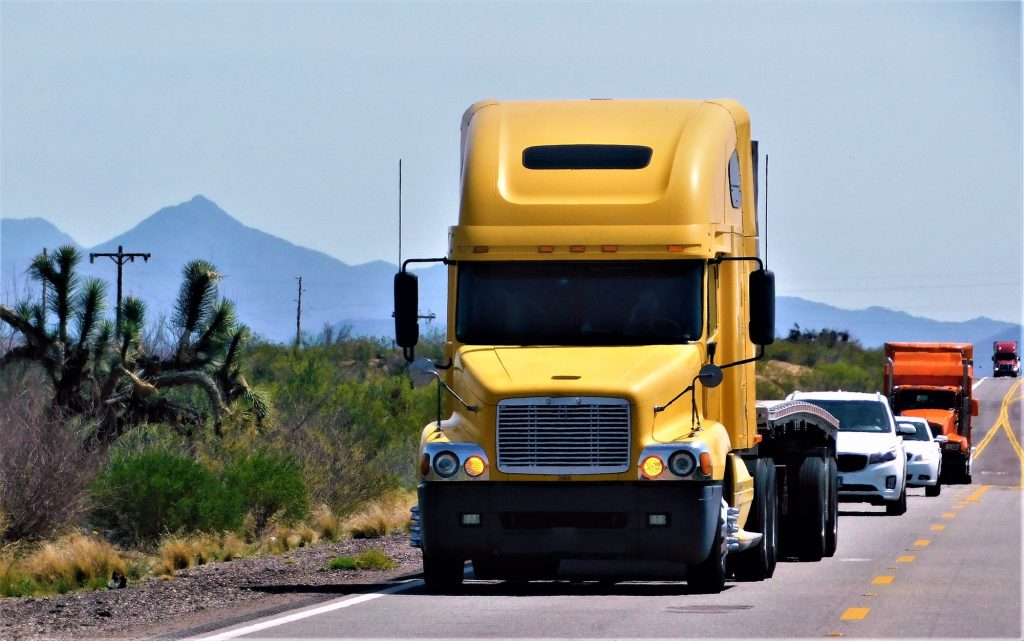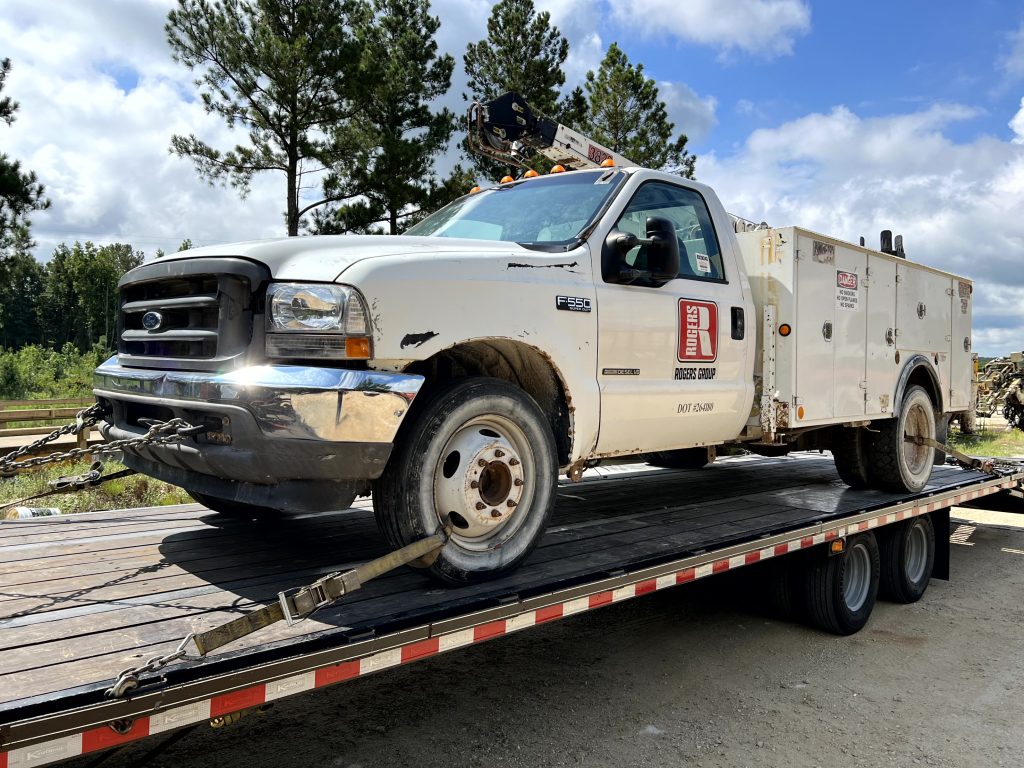What is Over-The-Road Trucking (OTR)? Rules That Apply
Freedom Heavy Haul can offer expedited Pickup and Delivery for any size shipment anywhere in the USA. Contact us today for No Hassle, No Pressure Pricing.
Over-the-road (OTR) trucking is a critical segment of the transportation industry, playing a vital role in the movement of goods across long distances. This type of trucking involves drivers operating over vast geographic areas, often spanning several states or even coast-to-coast.

OTR trucking is distinguished by its long hauls, extended periods away from home, and significant independence on the road. This article teaches you what is over-the-road trucking, offering insights into its complexities and how it contrasts with other types of trucking.
What is Over-The-Road Trucking: The Basics
Local trucking operates on a smaller scale compared to OTR trucking. In local trucking, drivers typically work within a specific area or region, often within a day’s drive from their home base. This means that local truck drivers usually return home at the end of each working day.
The cargo transported in local trucking is diverse, ranging from food products to retail goods, and the routes are often repetitive and predictable. Understanding local trucking is essential for comprehending the broader scope of the trucking industry and how it interplays with OTR trucking.
Insights into Regional Trucking
Regional trucking strikes a balance between OTR and local trucking. Regional truck drivers cover more considerable distances than local drivers but do not typically engage in the extended, cross-country hauls characteristic of OTR trucking.

Regional routes might span a few states or a specific geographical area, such as the Midwest or the Pacific Northwest. Drivers in this sector often spend a few nights away from home each week, offering a middle ground in terms of time away from home and route length.
Over-the-Road vs. Local vs. Regional Trucking
Comparing Work Structures
The work structure in trucking varies significantly across OTR, local, and regional sectors. OTR trucking is characterized by long periods on the road, extensive travel distances, and a high degree of independence. In contrast, local trucking involves shorter, more routine routes with drivers typically returning home daily. Regional trucking offers a blend of both, with longer routes than local but more home time than OTR.
Analyzing Time Spent at Home
Time at home is a crucial differentiator among these trucking types. OTR drivers spend extended periods away, often weeks at a time, while local drivers usually enjoy the benefit of returning home daily. Regional drivers have a varied schedule that might require a few nights out but generally allows more home time than OTR trucking.
Job Role Consistency Across Trucking Types
Job role consistency varies across these sectors. OTR trucking can involve a diverse range of cargo and routes, offering variety but also unpredictability. Local trucking tends to have more consistent routes and cargo types, while regional trucking offers a balance of consistency and variety.
Evaluating Compensation Variations
Compensation in trucking is influenced by the type of trucking one engages in. OTR trucking typically offers higher pay due to the longer distances and time away from home, while local trucking may offer lower compensation but more stability and home time. Regional trucking often falls in between, with compensation reflecting the moderate distances and time away from home.
Age Restrictions and Regulations in Trucking
Age restrictions and regulations vary slightly across these trucking types. Generally, truck drivers must be at least 21 years old to drive interstate, which applies to most OTR jobs. However, some local and regional positions may be available to drivers who are 18-20 years old, depending on state regulations and the nature of the routes.
The Work Environment Unique to Over-the-Road Trucking
The work environment in OTR trucking is unique and demanding. Drivers spend long hours alone on the road, often in varying weather conditions and through different terrains. The cab of the truck serves as both a workspace and a living space, with drivers needing to be adept at managing their schedules, routes, and daily needs while on the move.

The OTR trucking lifestyle requires a high degree of independence, adaptability, and resilience.
Typical Schedules for Over-the-Road Truckers
OTR truckers often have schedules that involve extended periods on the road, typically ranging from a few weeks to a month at a time. Their schedules are dictated by delivery deadlines and routes, which can vary significantly from one job to another.
OTR drivers must be flexible and ready to adapt to changing schedules and routes, often with little notice.
Essential Career Requirements for Over-the-Road Trucking
Pursuing a career in OTR trucking requires meeting specific requirements. A Commercial Driver’s License (CDL) is essential, along with specialized training, which may be provided by trucking schools or through on-the-job training programs.
OTR truckers must also be knowledgeable about safety regulations, cargo securement, and have a strong understanding of logistics and navigation. Physical fitness and the ability to manage long hours on the road are also crucial.
Understanding the Salary Dynamics of Over-the-Road Truck Drivers
The salary for OTR truck drivers can be quite lucrative, often reflecting the challenging nature of the job and the long hours spent away from home. Pay structures vary, with some drivers earning a mileage rate, while others may receive a flat rate per haul or an hourly wage.
Additional factors like experience, type of cargo, and specific company policies also influence earnings.
Challenges and Rewards of Over-the-Road Trucking
OTR trucking presents a unique set of challenges and rewards. Drivers face long hours, solitude, and the need to be self-reliant, but they also enjoy the freedom of the road, the opportunity to see different parts of the country, and the satisfaction of playing a crucial role in the nation’s supply chain. The balance between these challenges and rewards often defines the career of an OTR trucker.
Impact of Technology on Over-the-Road Trucking
Technology has significantly impacted OTR trucking, improving safety, efficiency, and communication. Advances in GPS and routing software help drivers navigate more effectively, while technologies like electronic logging devices (ELDs) ensure compliance with regulations.
The integration of technology in trucking continues to evolve, shaping the future of the industry.
Health and Wellness Tips for Over-the-Road Truckers
Maintaining health and wellness is a critical aspect for OTR truckers, given the sedentary nature of the job and irregular schedules. Tips for truckers include maintaining a healthy diet, incorporating physical activity into their routine, ensuring adequate rest, and staying mentally engaged to combat the solitude of the road.
Future Trends in Over-the-Road Trucking
The future of OTR trucking is shaped by various factors, including technological advancements, regulatory changes, and industry trends. Autonomous trucks, electric vehicles, and increased emphasis on sustainability are some of the developments likely to influence the future of OTR trucking.
Resources and Support for Over-the-Road Truckers
A range of resources and support systems are available for OTR truckers to help them navigate the challenges of their profession. These include professional organizations, online forums, health and wellness programs, and educational resources aimed at enhancing the trucking experience and providing support.
Legal and Regulatory Aspects in Over-the-Road Trucking
OTR trucking is governed by a complex set of legal and regulatory frameworks, including hours-of-service regulations, safety standards, and cargo securement rules. Understanding and adhering to these regulations is essential for the safety and legality of OTR trucking operations.







